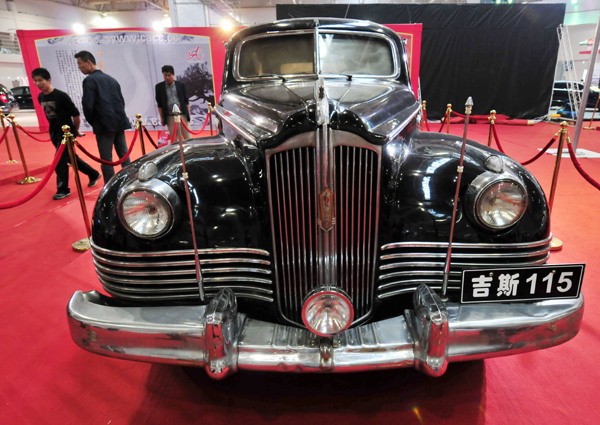Friendship comes gift-wrapped
Updated: 2013-03-22 07:12
(China Daily)
|
||||||||
Pandas, produce and handicrafts highlight joint ties between two nations
Since China and Russia established diplomatic relations in 1949, when the People's Republic of China was founded, both countries have developed a deep friendship.
With President Xi Jinping beginning a visit to Russia, the best evidence of this friendship are the national gifts exchanged between leaders of the two countries.
According to the saying, courtesy requires a return of visits received, and national gifts play important roles, with China's gifts to foreign leaders including agricultural products, handicrafts and even giant pandas.
In recent years, Chinese leaders have presented gifts including precious tea and porcelain to their Russian counterparts. But in the past, the gifts were quite different.
When Chairman Mao Zedong visited Moscow in December 1949, he took many well-selected gifts, as Soviet leader Joseph Stalin's 70th birthday was approaching.
It was Mao's first trip abroad and he greatly valued the visit as well as the gifts, which included traditional Chinese handicrafts featuring Stalin's portrait woven in silk, a Qing Dynasty (1644-1911) porcelain vase, a large vase carved from ivory, and even vegetables and fruit such as cabbages, pears and green Chinese onions.
According to Jiefang Daily, choosing agricultural produce such as turnips brought Stalin closer to the Chinese people, enabling him to feel that besides the top Chinese leaders, the Chinese public also respected him highly, as they would take such gifts to visit their relatives during holidays and festivals.
Mao returned to China by special train bearing gifts from the Soviet Union, the most precious being two automobiles, including a bulletproof ZIS-115 limousine.
In 1954, Soviet leader Nikita Khrushchev began his first visit to China, bringing more than 11,500 items from various industries such as metallurgy, daily necessities and electrical goods, which went on exhibition in Beijing.
He presented 83 items to China, including tractors and combine harvesters, which China was not able to manufacture at the time. Mao wrote twice to express his gratitude.
In 1957, Mao attended celebrations in Moscow to mark the 40th anniversary of the Russian October Revolution, his second and last visit abroad. He was invited to stay in the Kremlin, unlike other leaders attending the festivities.
China prepared gifts one year ahead and these caused a sensation when they were exhibited in Moscow. The most unique was a set of 27 models of structures the Soviet Union helped China to build, such as the Yangtze River Bridge in Wuhan and the First Automobile Works in Changchun, marking China's progress in construction.
China also sent giant panda Ping Ping to Moscow Zoo as a special gift that year. It was the start of the nation's Panda Diplomacy, which became popular in the 1970s when the government gave pandas to other countries, including the United States and France, in a show of friendship.
In 1959, China sent An An to the zoo as Ping Ping's companion. Ping'an means safe and sound in Chinese.
xulin@chinadaily.com.cn

 Li Na on Time cover, makes influential 100 list
Li Na on Time cover, makes influential 100 list
 FBI releases photos of 2 Boston bombings suspects
FBI releases photos of 2 Boston bombings suspects
 World's wackiest hairstyles
World's wackiest hairstyles
 Sandstorms strike Northwest China
Sandstorms strike Northwest China
 Never-seen photos of Madonna on display
Never-seen photos of Madonna on display
 H7N9 outbreak linked to waterfowl migration
H7N9 outbreak linked to waterfowl migration
 Dozens feared dead in Texas plant blast
Dozens feared dead in Texas plant blast
 Venezuelan court rules out manual votes counting
Venezuelan court rules out manual votes counting
Most Viewed
Editor's Picks

|

|

|

|

|

|
Today's Top News
Boston bombing suspect reported cornered on boat
7.0-magnitude quake hits Sichuan
Cross-talk artist helps to spread the word
'Green' awareness levels drop in Beijing
Palace Museum spruces up
First couple on Time's list of most influential
H7N9 flu transmission studied
Trading channels 'need to broaden'
US Weekly

|

|








